The 25 Dumbest Stadiums Ever Built
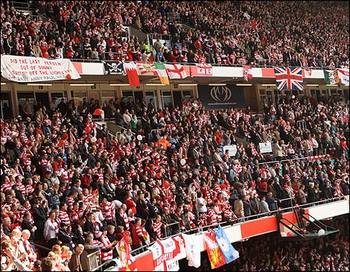
A great stadium can be the difference between a fan base becoming the 12th man. A dumb stadium means an uncomfortable environment for both fans and players alike.
No one wants to sit three hours in a refrigerator or be placed in jail for rooting too hard. Players don't want to be a move away from an ACL injury.
From Major League Baseball to World Cup soccer, some unfortunate teams call the world's worst stadiums home.
Whether the stadium fits 21,000 or 100,000, here are the 25 dumbest stadiums ever built.
No. 25 Marlins Ballpark
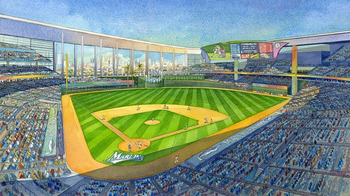
Until Opening Day 2012, consider Marlins Ballpark a dream.
A team with one of the lowest payrolls and high turnover with players and owners finally gets the funding to build its own ballpark at the site of the Orange Bowl.
There's going to be a retractable roof, fish tanks to the left and right of home plate, and a flying fish following each "Miami Marlins" home run.
Considering the decades-long struggle to get the stadium to become a reality, wouldn't it be horrible if the Mayans were correct and the end of the world is December 2012?
That would make only one season in the $515-plus million stadium.
No. 24 Chase Field

Many complain that the home of the Arizona Diamondbacks resembles an airport hangar. Or a train shed.
Plus, the upper deck is too far from the field.
A cool feature of Chase Field is the swimming pool in right-center field, but as the first retractable roof in the United States (circa 1998), it was bound to have some problems.
Hitters have never been too happy with the distance in center field.
No. 23 Beaver Stadium
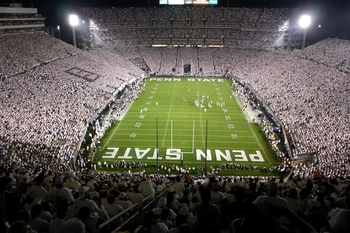
Other than Penn State fans, who would want to watch a game with more than 107,000 of one's closest friends?
At Beaver Stadium, which opened in 1960, it's all about the seating capacity.
It's currently the second-largest stadium in the western hemisphere and the fourth-largest in the world.
In constant battle for the record is the University of Michigan. The Big House opened in 1927 and is currently the largest stadium in the United States.
One can only imagine the amount of security needed, as well as the pain to head over to the concessions.
No. 22 (A Deteriorating) Orange Bowl
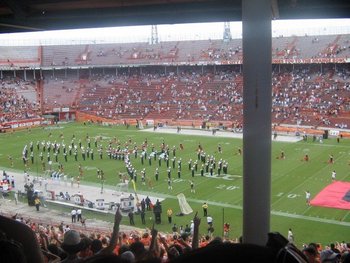
Set aside the national championships and Super Bowls. Ignore its heyday for a second.
In its last days, the Orange Bowl had disgusting bathrooms and one concession stand. No surprise that fans would get rowdy in the heat and humidity.
They needed fluids and shade!
Instead of keeping around the historical (but not upgraded) stadium, a new one should've been in the works a long time ago.
Wasn't it appropriate that in its final game, the University of Virginia Cavaliers embarrassed the University of Miami Hurricanes 48-0?
No. 21 Oakland-Alameda County Coliseum
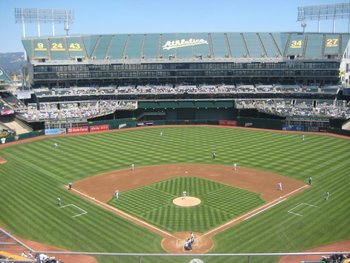
When one hears the term coliseum, visions of gladiators and trojans immediately come to mind.
Unless of course, it's an Oakland Raiders or Oakland Athletics game.
In the rather industrial and seedy-looking neighborhood, the Oakland-Alameda County Coliseum has faced the difficult task of balancing both football and baseball since 1966.
The Mount Davis tarp structure is a perfect excuse to cover up way too many seats that could never be sold for a baseball game, while also promoting the green and yellow. Other stadiums have done the same thing.
Locally, the Miami Hurricanes put tarp on parts of the upper deck at Sun Life Stadium during lackluster crowds.
No. 20 Izod Center
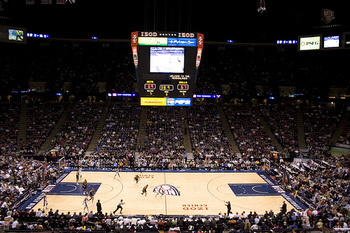
The only other place that has changed names more often is Sun Life Stadium.
Izod Center, which was home to the New Jersey Nets (though for not much longer as they move to Brooklyn), has a boring interior that resembles the actual team's performance.
Some compare the experience to being inside a refrigerator. Its cavernous nature makes it both cold and dull.
With both the New Jersey Devils and Seton Hall men's basketball now in Newark, the arena's future remains in doubt.
No. 19 Florida Citrus Bowl
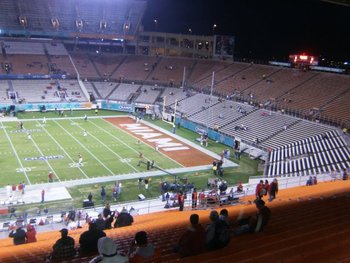
University of Miami running back Graig Cooper tore his ACL without anyone touching him at the 2009 Champs Sports Bowl.
Part of the Capital One bowl season, shouldn't Orlando's own Florida Citrus Bowl be adequate for top collegiate games?
During the entire month of December, high school championships and other events took place on the field, making the playing conditions unreasonable and dangerous.
It's very much like the Orange Bowl, except for the fact that it still exists. Since 1936, sporting events have taken place there.
When the University of Central Florida expressed dissatisfaction with the facility's state, an upgrade is severely needed.
The natural grass was replaced with AstroTurf after the Capital One Bowl.
Too bad it was late for Cooper.
No. 18 Robert F. Kennedy Memorial Stadium
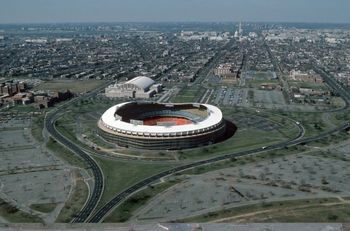
The Washington Nationals didn't get off to a good start at Robert. F. Kennedy Memorial Stadium in 2004.
One could say the losing ways started with a facility that had already housed major professional teams such as the Washington Redskins and the Washington Senators.
It hosted international soccer matches during the 1994 FIFA World Cup, the 1996 Summer Olympics, and the 2003 Women's World Cup.
Like many of the stadiums on this list, it was built as a multi-sport facility, this being the first. Until the Nats moved, it was the fourth-oldest stadium behind Fenway Park, Wrigley Field, and Yankee Stadium.
From the above photo, it's also not located in the most interesting area or prettiest land.
What good is a view of the Washington Monument from the opposite side of the nation's capital?
No. 17 Sun Life Stadium
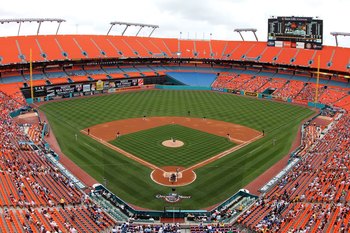
Doug Benc/Getty Images
Forget that the Florida Marlins struggle to fill the stadium.
Located near the border between Miami-Dade and Broward Counties, the only way to get to Sun Life Stadium is by car.
In rush-hour traffic from I-95, it can take an hour to attend a ballgame.
Without a retractable roof, baseball games get postponed or shortened because of South Florida's summer weather.
Sight lines down the third-base and first-base lines are unfavorable because it was built as a multi-purpose stadium (Miami Dolphins came first).
Moreover, the stands sit too far away from the playing field, which misses out on the intimidation factor. In a 75,000-seat stadium, a crowd of 40,000 looks small.
And don't forget about keeping track of the names.
Since 1987, the home for the Marlins and Dolphins has been called Joe Robbie Stadium, Pro Player Park, Pro Player Stadium, Dolphins Stadium, Dolphin Stadium, Land Shark Stadium, and Sun Life Stadium.
No. 16 Qualcomm Stadium

One would think that a stadium in San Diego would reflect the picturesque nature of the city.
Instead, Qualcomm Stadium (circa 1967) lacks an interesting design with the classy spiral ramps. True to the multi-purpose facility trend, football and baseball fans were too far away from the action.
If it looks familiar, think Sun Life Stadium.
San Diego must build a new stadium if it wants to host another Super Bowl.
Until then, cities such as Indianapolis, Dallas, and Detroit get the honor.
No. 15 Edward Jones Dome
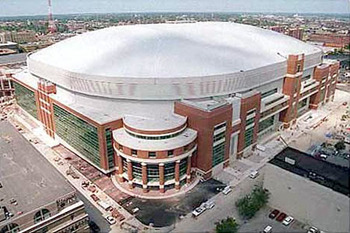
Who thought that an NFL stadium downtown was a good idea?
With larger crowds, traffic and parking is too much of a hassle.
Edward Jones Dome in St. Louis is a prime example of this predicament with the Rams in town. In a Sports Illustrated assessment of all 32 NFL stadiums, it came in last.
Although it opened in 1995, it has received criticism because of its poor planning. A dome surrounded by brick? Not something one sees too often...
For a stadium in the "Show Me" state, reports are out that it's not that impressive.
No. 14 Giants Stadium
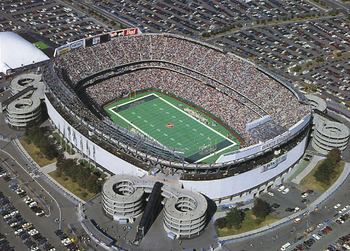
They're called the New York Giants and Jets, but Giants Stadium was actually in New Jersey.
Though it wasn't relatively old (mid-1970s), its flaw was its location.
There's no subway stop nearby. In one of America's most-populated areas, public transportation is crucial for efficiency.
And with three teams sharing the venue, there's no sense of individuality or home-field advantage based on aesthetics.
As a Jet, how must it feel to call Giants Stadium home?
No. 13 Bradley Center
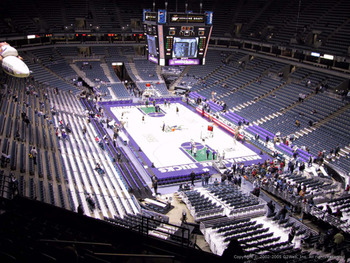
Despite "Fear the Deer" fever during the 2010 NBA playoffs, the oldest arena in basketball (circa 1988) could use improvement.
Concrete and steel can be found in full quantity in the concourses and seating areas. Then there's the fact that the court is on street level, which means that fans must hike up to their seats rather than taking a concourse up.
Since the county rejected the proposal of a new arena, the Milwaukee Bucks will continue to play at the Bradley Center and hope to inspire energy through their clever marketing campaigns.
No. 12 Shea Stadium
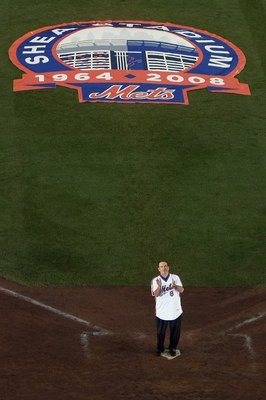
Nick Laham/Getty Images
Sure, the Beatles performed there in their prime. The Summer Festival for Peace took place in 1970.
Besides New York Mets baseball (1964-2008) and New York Jets football (until 1983), Shea Stadium hosted amazing musical acts throughout the years.
But with time, the stadium received a beating.
Media boxes didn't have air conditioning. Seats were old. It was built on top of a garbage landfill.
Still, the Home Run Apple became one of the franchise and stadium's trademarks over the years. Even players like Chipper Jones and Barry Larkin named their children after the stadium.
Only because of how well they did in there. Remember, it's been a while for the Mets...
No. 11 Miami Arena
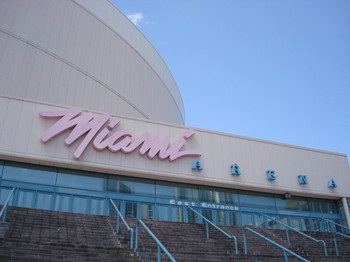
At a cost of $52.5 million, the Miami Arena lasted just 20 years.
The Miami Heat (1988-1999), Florida Panthers (1993-1998), and University of Miami basketball teams (1988-2003) called it home.
In a decade, it started to age. When the Heat moved to the AmericanAirlines Arena and the Panthers to the Bank Atlantic Center, the venue became relatively inactive.
Though it was easily accessible via the Metrorail, it held only 16,000 fans for basketball and 14,000 for hockey.
A title was never won in the arena.
Its pink walls and roof imploded in 2008 and truly represents the Miami sports scene.
No. 10 Arthur Ashe Stadium
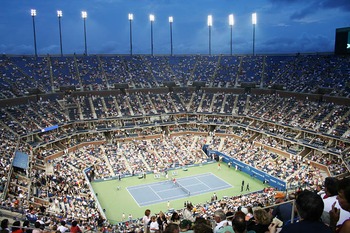
With the U.S. Open underway, the largest tennis venue in the world is Arthur Ashe Stadium.
Opened in 1997, the rows are so long that getting in and out of seats is a challenge. That also means the nuisance of standing up and letting people through during play.
Yes, that was read correctly.
Unlike other tennis venues where silence is golden and taking one's seat means during stoppage of play, noise runs amok.
Then there's Row Z being 120 feet, or 10 stories, above the court. Though the ball may be yellow, it doesn't make it any easier to spot.
And with a capacity of 21,000, even the men's final struggles to sell out.
No. 9 Hubert H. Humphrey Metrodome
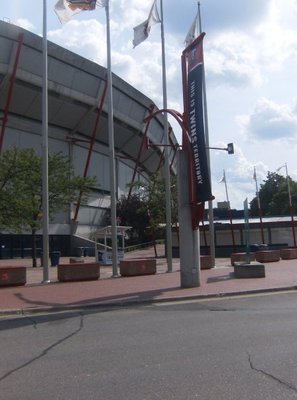
For more than 25 years, the Hubert H. Humphrey Metrodome has been an eyesore in Minneapolis.
With the Minnesota Twins now at Target Field, the Vikings still play at the plastic-filled stadium. The chairs and rails are made of the material.
Poor sight lines and lack of character make it seem like a hardware store.
And the SuperTurf.
Then there's the accidental swastika on the ceiling. Plus, a bag in the outfield that tries to hide football facilities.
Don't forget the plexiglass that was around for Kirby Puckett's play during game six of the 1991 World Series.
It's another case of a multi-purpose stadium causing problems for baseball.
The only plus? It's right near the Metro Transit.
No. 8 Tropicana Field
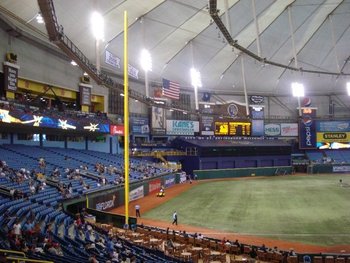
At first glance, Tropicana Field looks like it was once part of the circus.
The Tampa Bay Rays' home since 1998, the coolest feature is the petting tank where fans can go behind center field and visit with rays.
Other than that, the only non-retractable dome in Major League Baseball makes no sense when its location is in the Sunshine State.
More importantly, when Tropicana Field was built in 1990, there wasn't a tenant ready to move in.
It would take eight years before a major sports organization would call the unusual stadium home.
No. 7 The Alamodome
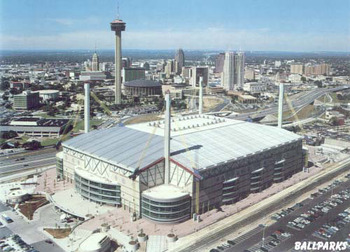
The Alamodome opened in 1993 in the hopes of acquiring an NFL team to play in San Antonio.
Seventeen years later, there's still no football team in the city. Instead, the San Antonio Spurs took the court for a decade.
Other events include the NCAA Final Four, NBA All-Star Game, and various concerts.
In 2005, the San Antonio City Council voted to spend close to $6.5 million to renovate the Alamodome in order to lure an MLS franchise.
Considering the original main purpose of the stadium, it's probably easy to assume the city has given up.
No. 6 Candlestick Park
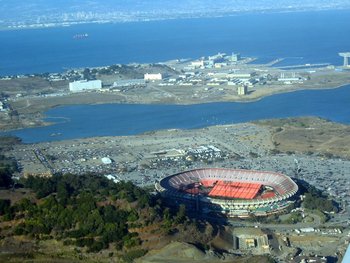
Northern California is beautiful, but a fan wouldn't be able to tell in Candlestick Park.
There are no views of the bay, unlike the San Francisco Giants' new venue, AT&T Park.
Not to mention the stadium is prone to 45 mph winds, which not only makes for chilly temperatures, damp air, and fog, but problems on the field for players.
Who would want to be a kicker for the 49ers?
Over time, the sun has faded the seats' colors over time and makes the stadium look older than it really is (circa 1960).
No. 5 Veterans Stadium
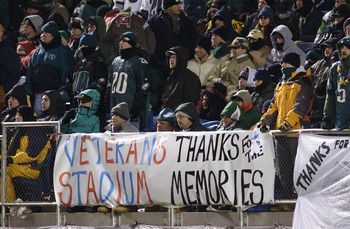
Ezra Shaw/Getty Images
That turf. The jail. The 700 Level.
Philadelphia Veterans Stadium is a far cry from Citizens Bank Park.
The Philadelphia Eagles (1971-2002) and Philadelphia Phillies (1971-2003) played at the Vet for decades in front of the most loyal and fanatical people in sports.
Baseball purists disliked the multi-purpose stadium because seats in the upper deck were so high that fans couldn't see the game without binoculars.
Then there was the field surface's AstroTurf, which contained many gaps and uneven patches.
It was a knee injury waiting to happen.
No. 4 Estádio Do Maracanã
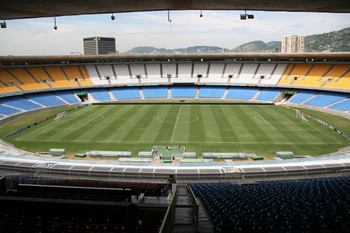
With the World Cup and Olympics headed to Brazil, Estádio do Maracanã will play a prominent part.
Some call it soccer's mecca.
Opened in 1950, the soccer stadium had an upper stand collapse in 1992, which led to three deaths and 50 injured.
Naturally, after the incident, the stadium's capacity was decreased. At one point, it used to hold nearly 225,000 people, but nows contains around 95,000.
In an article by the Daily Telegraph from 2000, the Maracanã was said to be suffering from corrosion because of football fans relieving themselves on the terraces.
No. 3 Nassau Veterans Memorial Stadium
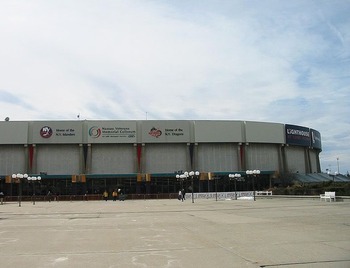
The second hockey team of New York, the Islanders have played at Nassau Veterans Memorial Coliseum since 1972.
As the second-oldest arena behind the Rangers' Madison Square Garden, it has the smallest capacity of all arenas in the NHL without a standing room.
But it hasn't been alive since the 1980s when the facility was referred to as "Fort Neverlose" because of four consecutive Stanley Cup victories.
Since then, opposing teams' fans and even frustrated homers have called it the "Nassau Mausoleum." It also refers to injuries that take place in the entertainment circles.
In 1972 it was nicknamed the "Bust Palace" for arrests that took place at rock concerts.
For more than 10 years the Islanders have tried to replace it. Renovations are finally scheduled to get underway.
No. 2 Kingdome
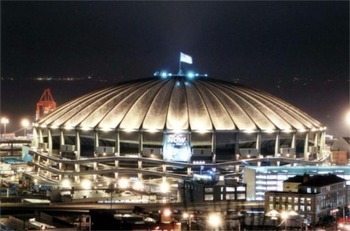
Looking at the Kingdome, one would think that the ceiling is the most important element.
Leaks were discovered in the roof two months prior to the stadium's opening. Repairs made the situation worse and remained undone.
In 1994, water-logged tiles fell while the Seattle Mariners were on the field preparing for a game.
Located in Seattle, the multi-purpose stadium opened in 1976 and was home to the Seahawks, Mariners, and Supersonics.
Yes, basketball in a football stadium before the glamor of Jerry's World.
Back then, a push for the domed stadium continued despite the absence of a major league sports team to occupy it. For the groundbreaking ceremony, protestors interrupted the speakers and threw mud balls at them.
After years of complaints from both the NFL and MLB beginning in the 1990s, the teams relocated and the stadium was imploded in 2000.
No. 1 Olympic Stadium
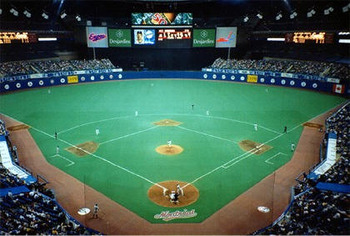
Olympic Stadium was almost as bad as the Montreal Expos.
With an opening in 1976 in time for the summer Olympics, the stadium has not had a tenant since the Expos relocated to Washington D.C. in 2004 and became the Nationals.
It has a history of financial and structural problems, and is seen as a white elephant.
First came a labor strike that caused a delay of the building, including the tower. It wasn't until 1987 that the tower and roof were completed.
Seating wasn't completed in time for the Olympics.
Despite a covered stadium, when rain was brought on by high winds, a delay took place because the roof was torn by the conditions.
Posted by gjblass at 3:17 PM
Labels: Football Stadium, luxury stadiums





0 comments:
Post a Comment